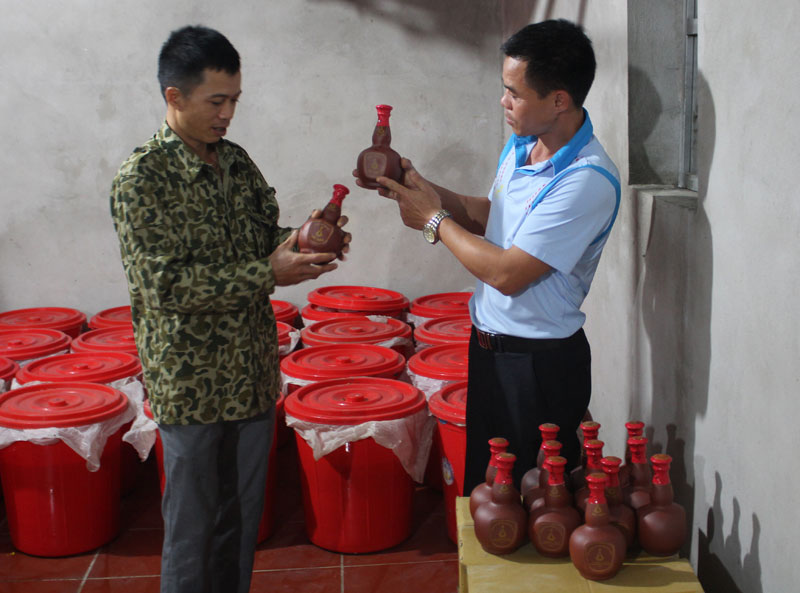


 The members of the cooperative group of brewery villages in
Dinh village, Phu Lai commune (Yen Thuy) are checking the products before
delivering to customers.
The members of the cooperative group of brewery villages in
Dinh village, Phu Lai commune (Yen Thuy) are checking the products before
delivering to customers.
The festival of Xam communal house is a place to reappear the daily activities, the habits and all the changes in the social life of Vietnamese villages over hundreds of years with familiar images, close to the soul of everyone, contributing to conserving and preserving the national cultural identity. Therefore, Xam communal house and the festival of Xam communal house are considered as a valuable cultural heritage of the ancient Muong area of Yen Thuy district in particular and Hoa Binh province in general.
According to Chinese documents and the seniors, Xam communal house was built in the year of the fifth Thieu Tri (1845). The communal house worships the god of tutelary village known as a god, the local name is Bui Van Khu (Do Khu) and his wife Thien Tinh princess.
An indispensable item during the festival of Xam communal house is the wine of Dinh village, which is also known as Dun Din traditional wine, a product with a delicious and attractive flavor being passed down from hundreds of years on the land with a source of streams and fresh, cool climate and fertile soil.
Mr. Bui Van Vinh from the cooperative group of traditional wine-making village of Du Din says: Previously, Dinh village, Phú Lai commune was Du Din one, Phu Thuy commune (Lạc Thuy). So we named it "Di Din” wine. Du Din wine is made from glutinous rice with yellow flowers grown in the village’s fertile fields by the local people. It is brewed for more than 3 months in a mountain cave with a natural thermal base of 260 degrees.
Then it is carefully distilled by the traditional technology, the alcohol vapor is condensed through long bamboo tubes leading to the crockery. This is a special way of distilling wine, without using preservatives, so Du Din can be detoxified carefully, keeping its delicious taste with apricot yellow color of sticky rice. In addition, the jars of wine are stored in Cung cave for many years so that it reaches a special deliciousness, after enjoying it also gives the guests a warm, juicy, exciting and uplifting feeling.
To ensure the quality Du Din wine is produced from September to December only. Each year, the cooperative produces about 2,000 liters on average.With the high food safety, the reasonable prices and the outstanding effects such as improving beauty and health bringing a smooth sleep and so on. Du Dia wine is increasingly favored by customers inside and outside the province.
From the initial idea, the tradition of making wine is maintained to preserve and conserve the traditional craft left by the ancestors. By 2018, the cooperative group in Dinh hamlet, Phu Lai commune with a total of 19 members had been recognized as a traditional trade village by the Provincial People's Committee and had been granted a Certificate of Trademark "the traditional Du Din wine” by the Department of Science and Technology.
Therefore, Du Din wine has not only been a popular product for the customers in the district as well as in the province for many years, but it also has been in many big markets such as Hanoi, Ho Chi Minh City, Binh Duong ... This is also the basis for Phu Lai commune to make Du Din wine to become the local OCOP product in the near future.